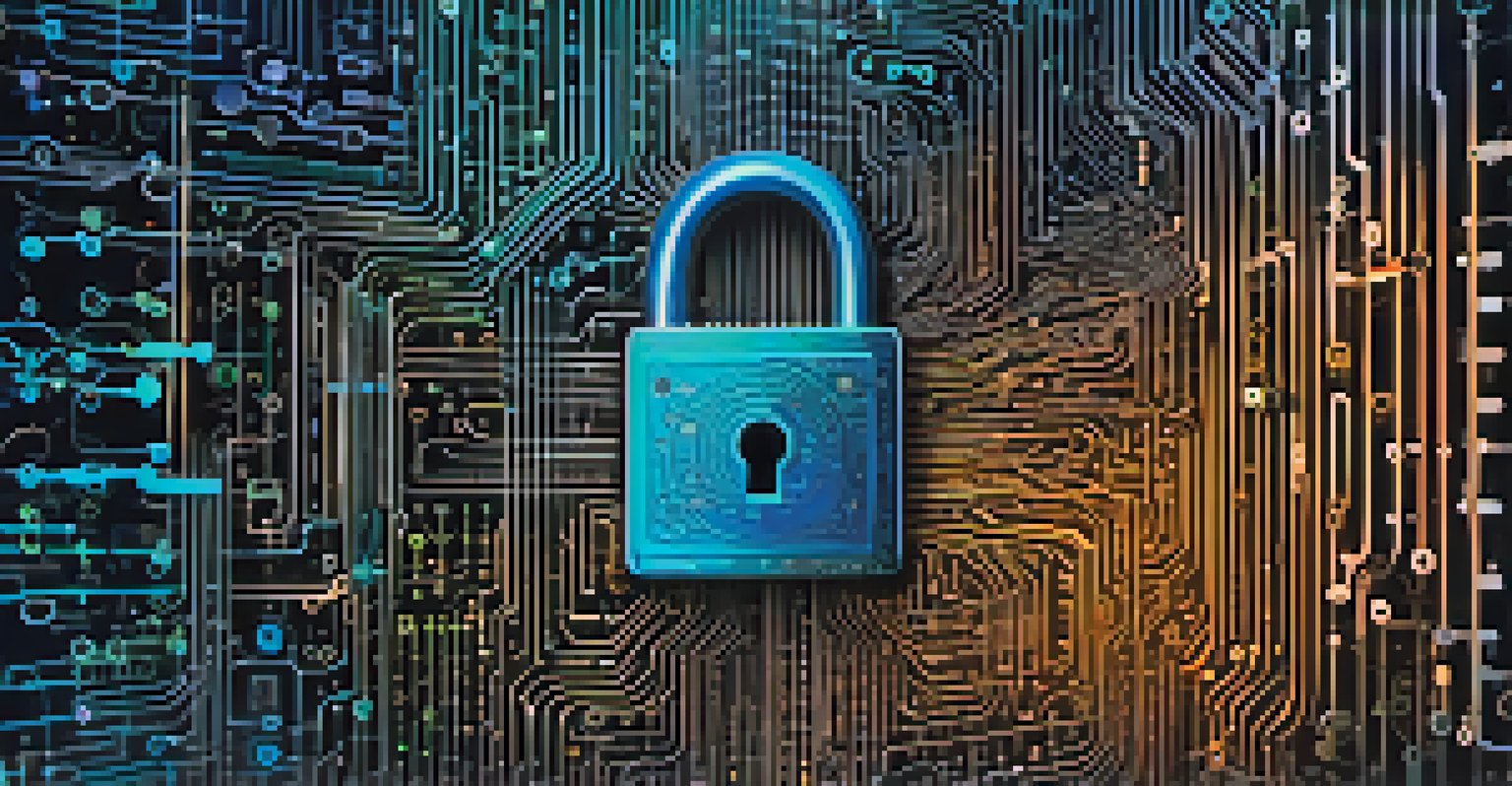Cybersecurity Trends Every Business Should Follow in 2024

The Rise of AI in Cybersecurity: A Double-Edged Sword
As artificial intelligence continues to evolve, it's becoming an integral part of cybersecurity strategies. Businesses are leveraging AI for threat detection and response, making it easier to identify potential breaches before they escalate. However, cybercriminals are also adopting AI, using it to craft more sophisticated attacks, which makes the landscape even more challenging.
Cybersecurity is much more than a matter of IT. It’s a matter of business continuity, trust, and reputation.
In 2024, organizations must balance the benefits of AI with the risks it poses. Adopting AI tools can enhance security measures, but awareness and preparation against AI-driven threats are equally important. Think of AI as both a shield and a sword; it can protect you, but it can also be wielded against you.
To stay ahead, businesses should invest in AI-driven cybersecurity solutions while also training personnel to recognize AI-generated threats. This dual approach not only fortifies defenses but also fosters a culture of vigilance within the organization.
Zero Trust Architecture: Trust No One, Verify Everything
Zero Trust is becoming a fundamental principle in cybersecurity, especially as remote work persists. This model operates on the premise that threats could be internal or external, so it requires continuous verification of user identities and devices before granting access to resources. Essentially, no one is trusted by default, not even employees.

Implementing a Zero Trust strategy involves strict access controls and segmented networks. Each user, regardless of their location, must prove their identity and authority to access sensitive information. This approach minimizes the risk of insider threats and ensures robust security even in decentralized environments.
AI: A Boon and a Bane in Cybersecurity
While AI enhances threat detection, it also equips cybercriminals with advanced tools for attacks.
In 2024, businesses adopting Zero Trust can better protect themselves from data breaches and cyberattacks. It’s like moving from an open-door policy to a secure fortress where everyone has to show their ID before entering.
The Growing Importance of Cyber Hygiene Practices
Cyber hygiene refers to the practices and steps that users of computers and devices take to maintain system health and improve online security. As cyber threats become more sophisticated, the importance of basic cyber hygiene cannot be overstated. Regular software updates, strong password policies, and employee training can significantly reduce vulnerability to attacks.
The greatest risk is not that our computers will begin to think like men, but that men will begin to think like computers.
In 2024, businesses should prioritize cultivating a culture of cyber hygiene among employees. Just as we wash our hands to prevent illness, we need to adopt habits that prevent cyber threats. Simple practices, like using multi-factor authentication and recognizing phishing attempts, can make a world of difference.
By investing in regular training and awareness programs, companies empower their workforce to be the first line of defense against cyber threats. A well-informed team acts as a shield, reducing the likelihood of successful attacks.
Ransomware: Evolving Tactics and Prevention Strategies
Ransomware attacks have surged in recent years, and 2024 is expected to see even more sophisticated tactics from cybercriminals. These attacks often involve encrypting a victim's files and demanding payment for the decryption key. With the rise of Ransomware-as-a-Service, even less experienced hackers can launch devastating attacks.
To combat this growing threat, businesses need to implement robust backup and recovery plans. Regularly backing up data ensures that in the event of an attack, companies can recover without paying the ransom. Additionally, investing in threat detection and response tools can help identify potential vulnerabilities before they are exploited.
Zero Trust: Verify Before Accessing
The Zero Trust model mandates continuous verification of user identities, reducing risks from both external and internal threats.
Ransomware is a wake-up call for organizations to rethink their cybersecurity strategies. It’s not just about having the right tools but also about being prepared for the worst-case scenario.
Cloud Security: A Top Priority for Hybrid Workforces
As more businesses shift to cloud-based solutions, cloud security has become paramount. The flexibility and scalability offered by the cloud are appealing, but they also introduce new vulnerabilities. In 2024, organizations must prioritize securing their cloud environments to protect sensitive data from breaches.
Implementing strong security measures like encryption, access controls, and regular audits can help mitigate risks associated with cloud computing. Businesses should also ensure that their cloud providers adhere to stringent security standards, as third-party vulnerabilities can expose them to significant threats.
Cloud security is not just a technical issue; it’s a business imperative. By prioritizing cloud security, companies can protect their data and maintain customer trust in an increasingly digital world.
Compliance and Regulations: Navigating the Evolving Landscape
With data breaches making headlines, regulatory bodies are tightening their grip on cybersecurity compliance. In 2024, businesses must stay updated on regulations like GDPR, CCPA, and others that govern data protection. Non-compliance can lead to hefty fines and reputational damage, making it essential for organizations to be proactive.
Navigating this evolving regulatory landscape requires ongoing education and adaptation. Companies should conduct regular assessments to ensure their practices align with current laws and standards. Keeping abreast of changes in regulations is not just a legal obligation but a smart business strategy.
Cyber Hygiene: Essential for Security
Prioritizing basic cyber hygiene practices, such as regular updates and employee training, is crucial for minimizing vulnerabilities.
Ultimately, compliance is about safeguarding customer data and building trust. A strong compliance posture demonstrates to clients that a business takes their security seriously, fostering long-term loyalty.
The Role of Employee Training in Cybersecurity
Employees are often the weakest link in an organization’s cybersecurity defenses. In 2024, businesses must prioritize employee training as a key component of their cybersecurity strategy. Regular training sessions can empower employees to recognize potential threats, such as phishing attempts or suspicious downloads.
Training should not be a one-time event but an ongoing effort. By continuously educating staff about the latest cybersecurity trends and tactics, companies can cultivate a security-first mindset. Think of it as a fire drill—repeated practice can prepare teams to respond effectively in a crisis.

Investing in employee training is not just about compliance; it’s about creating a culture of security awareness. A well-informed staff can act as a powerful defense against cyber threats, protecting the organization from potential breaches.
The Future of Cybersecurity: Trends to Watch Beyond 2024
As we look beyond 2024, several emerging trends are set to shape the future of cybersecurity. These include the increasing adoption of quantum computing, which could revolutionize encryption practices, and the growing importance of privacy by design, where security measures are integrated into the development process from the outset. Staying ahead of these trends will be crucial for businesses.
Moreover, as cyber threats continue to evolve, so too must the strategies to combat them. Organizations will need to adopt more adaptive and resilient cybersecurity frameworks that can respond to new threats in real time. This means investing in advanced technologies and fostering a culture of innovation within cybersecurity teams.
The future of cybersecurity is a collaborative effort that requires businesses to stay informed and agile. By embracing new technologies and proactive strategies, organizations can better protect themselves and their customers in an increasingly complex digital landscape.